Have you entered my Craftsy online class giveaway? I have extended the deadline to May 25. Go ahead and enter it now!
May is the longest month in the calendar. Not just because it has 31 days. It is the last month of the school year, heralding all kinds of end-of-year activities. From recitals to picnics to award ceremonies to graduation and graduation parties. And, BolderBoulder. Several events are packed into each weekend. I would like an auto-pilot for this month!
In between all the necessary stuff, we try our best to pack in the unnecessary but fun stuff. Like the Erie Balloon Festival. This is a 3-day festival held in the neighboring town of Erie. My friend, Lisa, and I go every year and we were there last year, too.
May is also the month for frolicking babies. This baby squirrel and its sibling played and foraged in my frontyard until they were driven away by a common grackle that had made her nest in my blue spruce. She flew aggressively into them and pecked with abandon. Sadly though, she has no defense against other predators that make it up to her nest.
My allergies start taking a backseat by May. My sneezing is no longer as violent as it was in March and April. Spring snowstorms are the norm and we get at least one, if not two, in May. Thunderstorms bring in more humidity and that helps wash out the pollen from the air. The weather gets rather bipolar, 80s one day, 40s the next. This makes me long for dal. Especially dalichi amti. After varan, this is the simplest dal that was made in my mother's kitchen, and now in my kitchen. It depends heavily on a well-made just-right phodni and my favorite souring agent, tamarind.
Tur dal, or arhar dal, or pigeon peas, is the dal of choice. It is a good idea to soak the dal in water for at least a couple of hours, if not more. Another alternative is a hot soak. But, if like me, you suddenly get cravings and must make it, this recipe works even if the dal is not soaked.
There are two types of tur dal that are found in the Indian grocery stores: plain and oily. I have always bought the plain dal. The largest pack I buy is 4lbs and it only lasts me a couple of months. Dals used to be rubbed with oil to prevent infestation by small insects and worms. Women would spend hours in summer preparing their stock for the entire year. To my mind, the oil is completely unnecessary and demands a hot soak to rinse as much of it off the dal as possible. That means that oily dal cannot be used in a hurry. Be like me, buy plain tur dal!
I've said it over and over again, and I will say it one more time: when making a phodni / tadka / vaghar or seasoned oil, do not toss all the spices and aromatics into the hot oil all at once. Mustard seeds take longest to pop and by the time they do, all other ingredients will burn. There is a method to the madness and tossing everything into the hot oil, and waiting till they are done popping. is poor form.
Making a phodni is a very basic technique used all over India and, for some reason, cookbook authors have not been able to translate this into clear instructions. This is one of the first things I was taught by my mother and it is one of the first things I teach in my cooking classes.
I like to slice my chiles fine for this dal, to make the most of the wonderful aroma of the green chile. You can make a cut along its length but keep it intact. I do not recommend adding whole green chiles to hot oil. There is the chance that they might explode. It's better to make a cut down its length and only then, add it to the hot oil to make a phodni.
Indian tamarind, as found in the Indian grocery stores, is a hard block of fiber that demands the services of a chainsaw to cut it into smaller usable chunks. When I first moved to the US, I was disappointed by these hard blocks that could be used as rocks or weapons. I did not know about the existence of wet tamarind pulp and started using the popular metallic-tasting tamarind concentrate, Tamcon. I now believe that stuff is vile. Wet seedless tamarind can be found in Indian stores now, as well as any Asian store. Use it instead.
To use wet tamarind, soak it in warm or room-temperature water. Using your fingers, break it down and fish out all the pips, leftover shell and fiber. Soak it in warm water for quicker results and work the thick pulp into the water such that you now have a thick paste. Discard the solids and use only the paste.
No, I haven't made the switch to distressed or badly-painted backgrounds. These are my unpainted and weathered steps that are badly in need of an exterior coat. Until then, they work very well as a background for my pictures.
Cilantro is the final critical ingredient. Chopped fine and added into the dal just before serving. If you have the same gene that Julia Child did, you will never know how cilantro elevates this dal to something quite extra-ordinary.
I cannot cook just one cup of this dal. It has to be two. Leftovers are either saved for Medha's lunchbox or they are served at dinner the next day. This dal does not last very long in my home. The simplicity of comfort food always wins.
Let's make it then, shall we?
Dalichi Amti
Turichi dal
- 2 cups tur dal, picked over and cleaned of debris
- 2-3 tbsp neutral cooking oil
- 1 tsp black mustard seeds
- a good pinch of hing
- 8-10 curry leaves, washed and dried
- 2-3 hot green chiles, sliced
- 1/4 tsp turmeric powder
- ball of wet tamarind pulp that sits comfortably in an eighth cup
- 6 cups water
- 2 tsp salt
- 1/3 cup chopped cilantro
- Pick over tur dal for debris. Soak for at least a couple of hours in room-temperature water. Or do a hot soak, if hard-pressed for time.
- Soak wet tamarind in about 1/2 cup of warm water. Set aside.
- Heat oil in the pot of your pressure cooker. Yes, this is a pressure cooker recipe. When it shimmers, add black mustard seeds and as soon as they start popping, add hing.
- Add sliced green chile.
- Holding your splatter guard in hand, add curry leaves. Make sure the leaves are as dry as possible. There is nothing flamboyant or attractive about having oil splatter everywhere because you added wet leaves to hot oil.
- Add turmeric powder.
- Drain tur dal if it is being soaked. If not, rinse it in several changes of water, and add it to the pot. Adding the dal lowers the temperature of the hot oil and the phodni does not burn.
- Add 6 cups of water and salt. Stir.
- Using your fingers, work the tamarind into the water to make a thickish paste.
- Close your pressure cooker and add the weight. I use old-fashioned pressure cookers that have a weight and cook time is indicated by the number of pressure releases. For soaked tur dal, it is 3 "whistles"; for rinsed tur dal, it is 4-5 whistles.
- Turn the heat up to medium-high. It takes about 20-25 minutes to pressure-cook tur dal to the fall-apart stage.
- Open the pressure cooker only when it is safe to do so. Add chopped cilantro, stir. Add more water if it is too thick for your liking. Adjust seasoning and serve hot over basmati rice, with a traditional pickle.
Notes:
- I like to use avocado oil for my phodnis. Not only does it have a neutral taste, it also has a high smoking point.
- This dal thickens as it cools and may need some water to thin it down again.
- To up the flavor some more, use ghee instead of oil.







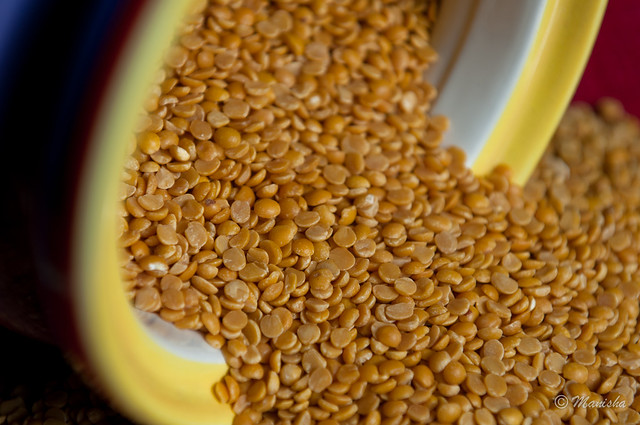
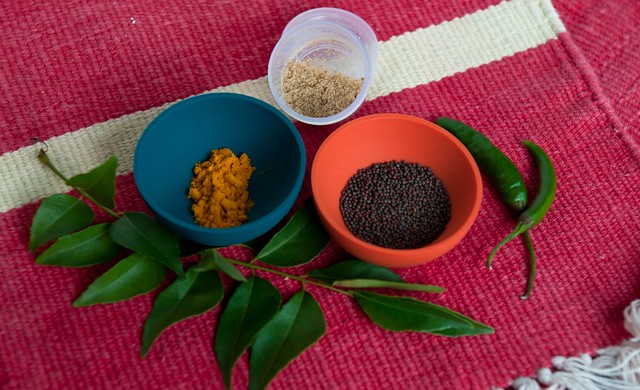

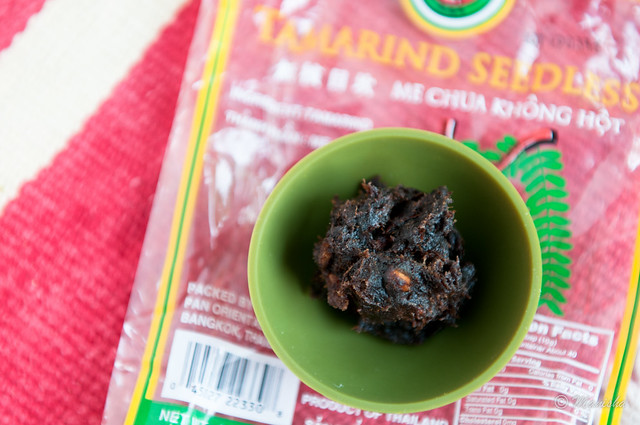
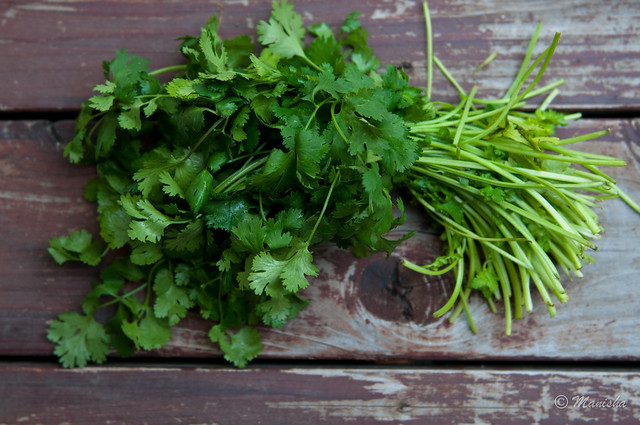
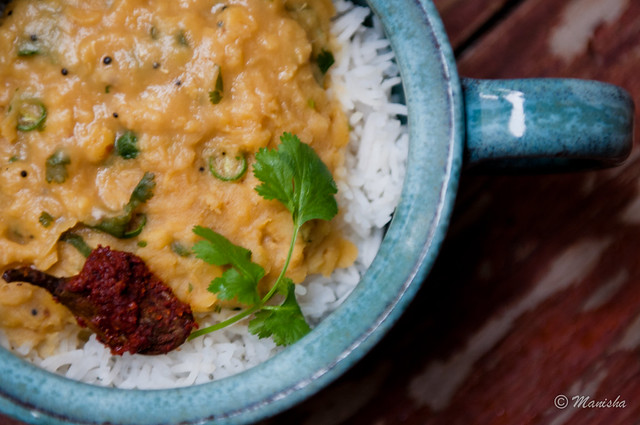
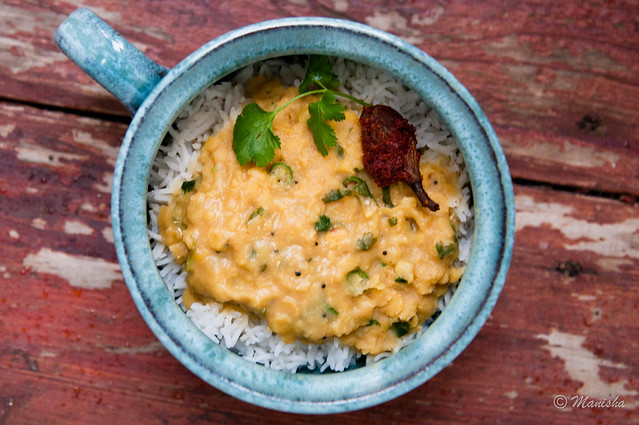



7 comments:
My absolute hands-down favourite every single time. Tur dal cooked is SO aromatic! Yum.
A pantry staple for me as well as I do a lot of Maharashtrian and South Indian cooking. So, so good with rice!
You're generating some insane cravings here..
Gaw-jus!
You are killing me you don't know how long i have not had dal. What is that shilpa thing you have mentioned.
Ah, you have me craving dal, bhaat and lonche. Thanks for enlightening me about oily tur dal, the first time I've encountered it is in Indian stores in the US. I've never known why it is oily and what it is used for.
you have me craving some now Manisha!
Post a Comment